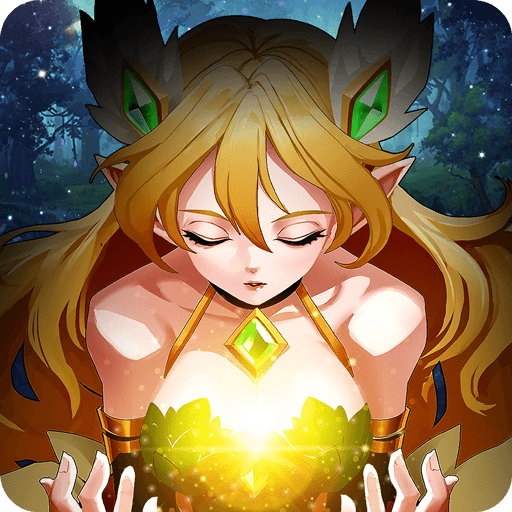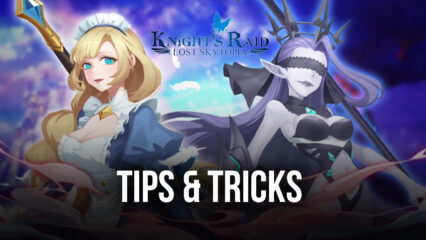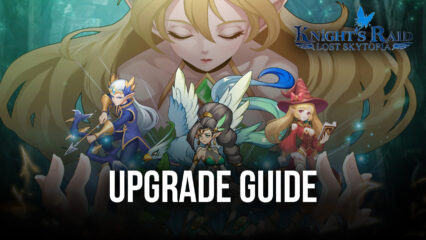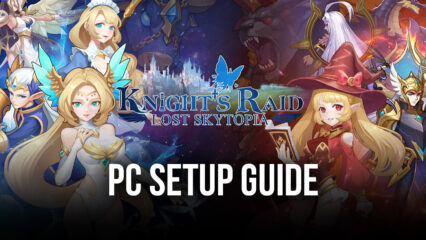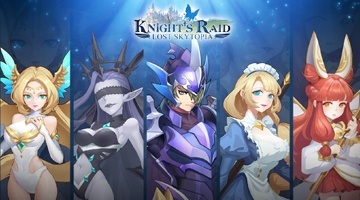A Beginner’s Guide to Knight’s Raid: Lost Skytopia
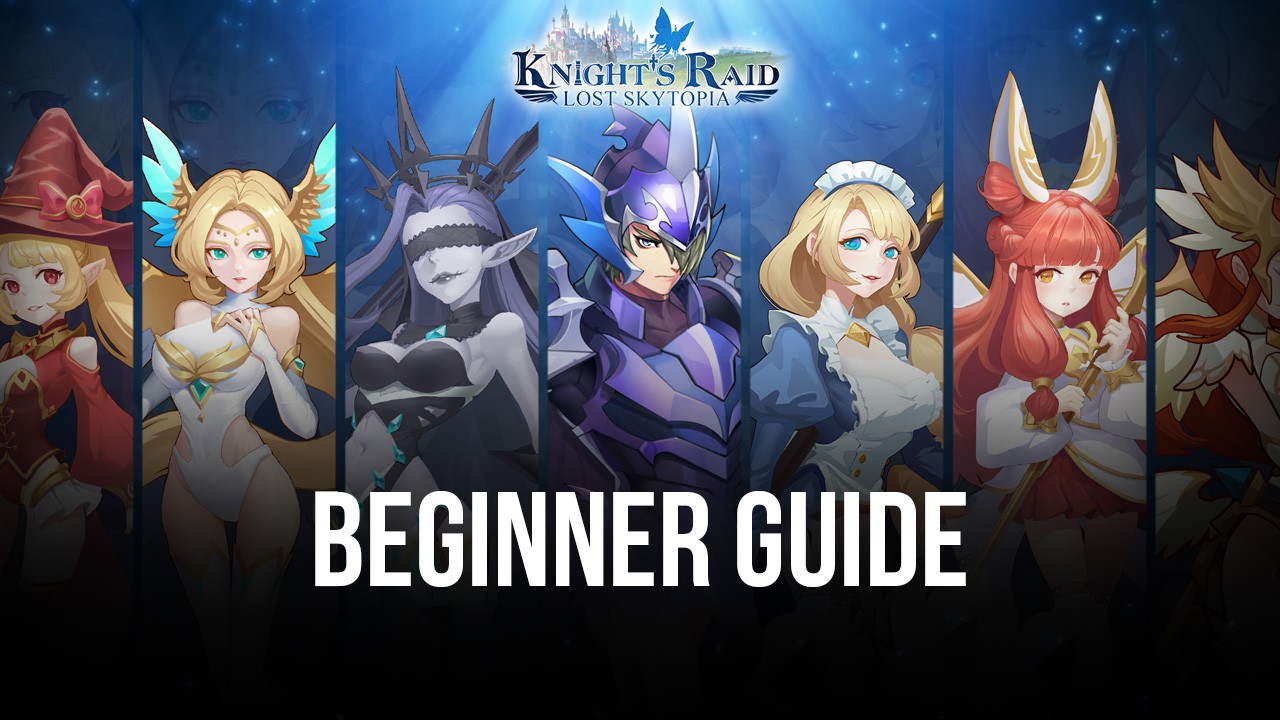
An exhilarating adventure awaits you when you play Knights Raid: Lost Skytopia. The Skytopia is in disarray, and you must form your team of formidable heroes to embark on a long journey in the mystical world of Karlmoss to eliminate enemies that threaten the Skytopia. Knights Raid: Lost Skytopia is packed with features that allow you to liberally customize your team formations and explore the vast landmarks of Karlmoss and reap its resources which you can use to upgrade your heroes.
There are quite a lot of technicalities that you need to familiarize yourself with within this game but worry not as this guide serves to help you in making your journey in saving the Skytopia much easier.
Hero Races and Classes
The heroes in Knights Raid: Lost Skytopia are very diverse in that they come in several races and positions. Additionally, each hero also has its own distinct character design that makes them easily recognizable. A hero’s race and position are very important to consider as it tells you about that hero’s strengths, weaknesses, and also gives you an idea of how they should be used in combat.
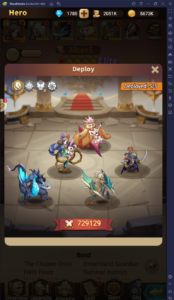
The game’s heroes can be part of your hero team holds a maximum of five heroes. Three of them are allocated to the rear side while the remaining two are allocated to the front side. When choosing which heroes to deploy to your team, you must keep in mind their race and their position.
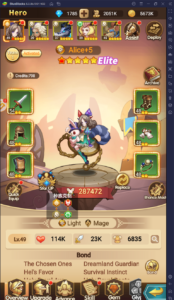
There are four hero races and six hero positions in the game, as of writing. Knights Raid: Lost Skytopia has a feature wherein a hero can deal either more damage to another hero or even receive more damage from another hero depending on the race of the two heroes. This race relationship system is simplified by the image and table below:
| Race | Deals More Damage to | Receives More Damage From |
| Light | Demon | Beast |
| Beast | Light | Nature |
| Demon | Nature | Light |
| Nature | Beast | Demon |
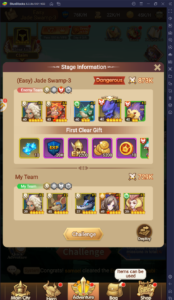
Taking the relationships between all the hero classes is very important to consider before entering a battle. Before doing adventure quests or before competing against other players, you can inspect the races of the enemy team’s heroes. Doing so gives you an idea of what heroes you should deploy to your team to maximize the chances of victory.
Additionally, your team also receives collective buffs whenever you have two or more heroes of the same race as team members. Said buffs are as follows:
| Race | Deploy 2 Same-Race Heroes | Deploy 3 Same-Race Heroes | Deploy 5 Same-Race Heroes |
| Beast | DEF +5% | HP +5% | DR +5% |
| Light | ATK +5% | Crit Res +5% | EVA +5% |
| Demon | ATK +5% | CRIT +5% | AMP +5% |
| Nature | HP +5% | ATK +5% | Hit Rate +5% |
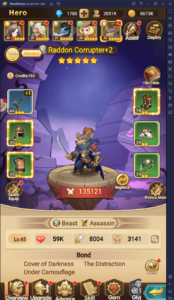
A hero’s position tells you about said hero’s combat abilities and how they deal damage to enemies or how they support the team overall. This is very important to consider when planning the best team formation. There are currently six hero positions in the game and these are:
- Warrior – this is one of the primary attack positions in the game and heroes with this position attack enemies head-on. Warrior heroes are best placed in front of the team positionings due to their offensive role.
- Assassin – is functionally like the Warrior position with the difference being that Assassin heroes sneak up behind enemies instead of attacking them frontally. Assassins make great flankers as they can effectively distract enemies, allowing support-class heroes to aid in taking the enemies out faster.
- Tank – this position consists of bulky heroes who absorb most of the enemies’ damage to protect the other heroes who have lesser health and to give an opening for other heroes to attack. Tank heroes have the most health points (HP) out of all other hero positions due to their role. Due to their defensive role, Tank heroes are best placed in front of the team alongside attackers such as the Warrior and Assassin.
- Ranger – heroes with this position do not attack enemies head-on and instead attack them from a distance. Ranger heroes are best placed at the back of the team positionings where they can be protected by a Tank hero and support either a Warrior or Assassin hero.
- Mage – Mage heroes attack more than one enemy at the same time, which makes them very good support heroes that can eliminate enemies faster. Mage heroes are best placed at the back alongside the Ranger heroes.
- Priest – this position is responsible for replenishing the health of other heroes. Having one Priest hero gives a huge benefit to your team, especially when you add a Tank hero.
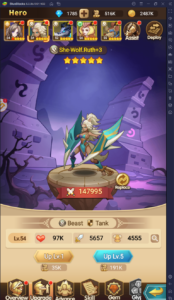
The game offers a variety of ways to upgrade your heroes. You can know more about making your heroes stronger by reading this guide that explains features such as Hero Advancements and equipping gear to your heroes.
Adventure
Adventure quests are where you explore the biodiverse regions of Karlmoss and eliminate enemies who stand in the way.
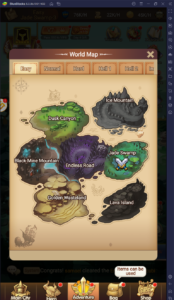
Each of the world’s regions is separated into multiple stages which you must clear to proceed to the next region.
In each stage, your hero team faces another team of five enemies that can be composed of creatures of different races. You can gain an idea about how strong the enemy team is by looking at their strength value, the number with the dual-sword icons.
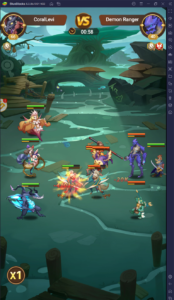
During combat, you cannot manually control the actions of your heroes as everything is done automatically. You can however control the speed of the fight by clicking on the ‘1x’ or ‘2x’ button.
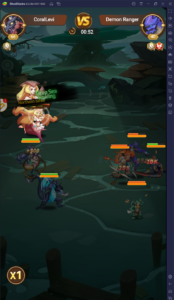
As your heroes are fighting the enemies, they will each fill up their own Ult Skill bar which is represented by a yellow bar below their HP bar. When this Ult Skill bar is completely filled, the hero will automatically activate an Ult Skill which is essentially a signature move that can deal massive damage to enemies or give buffs to other heroes. The battle momentarily pauses whenever an Ult Skill is activated. Your heroes are not the only ones who have this ability however as the enemies can also activate their own Ult Skill provided you let their skill bar completely fill up.

